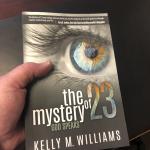Several times, Revelation identifies God triadically, triunely as the one “who is and who was and who comes” (1:4, 8; 4:8). He is the present God, the God who reaches back beyond the origins of all things – the God of whom it could always be said “He is” – and the God whose coming we anticipate. As Father, Son, and Spirit, He doesn’t stand aloof from time, but overarches and embraces all time. The brief speech of the “angel... Read more




















